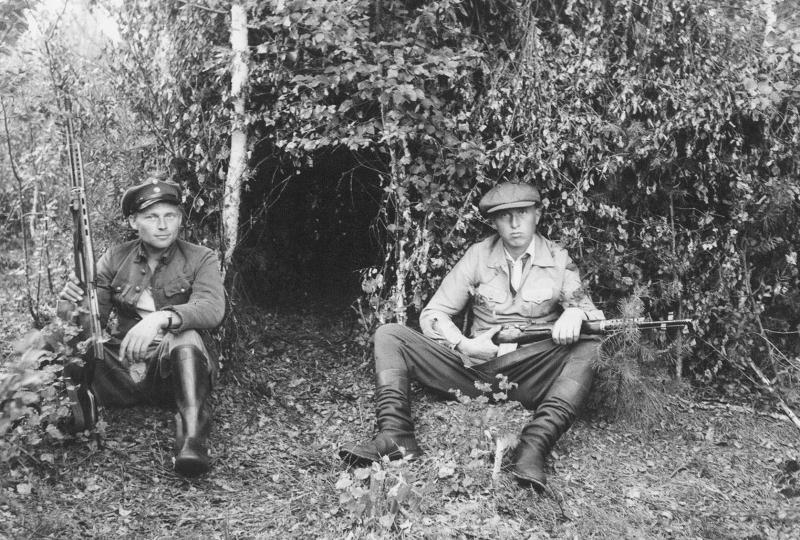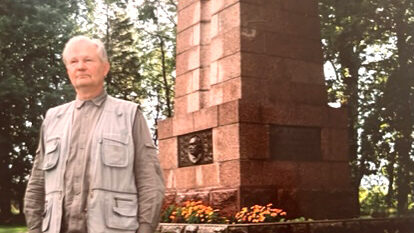A recent streamlining, organizing of personal archival material unearthed an interview that I conducted in 1990 with a man who claimed to be the Black Captain. At the time I was working at – well, employed by – “Noorte Hääl”, one of Soviet-occupied Estonia's higher circulation newspapers, thanks to connections established a year earlier with the editor-in-chief, able to do so by being a regular contributor to “Meie Elu”. As a result, I suppose that I belong to a select few – having earned rubles as well as dollars for being an ink-stained wretch.
Connections were everything in those days. Vello Lään is a highly respected radio broadcaster, translator and journalist (sports, humour), who had visited Canada in the late 1970's, written a memoir of visiting Maple Leaf country (“Vikerkaar Niagara kohal” – Rainbow over Niagara, published in 1981, worth looking for, as it provides an interesting perspective of Canada at the time). We clicked well. I expressed my interest in the “Forest Brothers” and he had just the individual for me to meet. This at a time when I had no right to be in Tartu, because of travel restrictions, but Soviet times meant that courage often overcame the law, as long as one did not stand out.
(As a sidebar, Lään invited me to an extended family gathering on the shores of Võrtsjärv, where I encountered my first ever siil, hedgehog, and also sponsored the volleyball game with one Canadian paper dollar (pre-loonie times!) to the winning team. Breaking far too many Soviet rules in the process, especially due to the pain of being on the losing side of the match. Lään is also a long-time badminton fanatic, and the Estonian from Canada lost on that court as well…)
Vello Lään introduced me to a man, who claimed to be the “Must Kapten”, Black Captain. I recall, though not in my notes, that thanks to Gorbachev's perestroika and glasnost policies, the purported freedom fighter had presented himself to the media in hope of restoring his legacy. We paid a visit to the former Forest Brother. Of that there was no doubt, considering his age, the bullet still trapped under the skin of his scalp against his skull, and the detail that this gentleman went into describing anti-communist guerilla activities.
It must be remembered that this encounter took place at a time when history was no longer obscured, hidden by Soviet censorship and blatant propaganda. Articles about Forest brothers were a regular occurrence, bunkers in forests were either revealed or even restored, and memoirs published, to great acclaim. Alfred Käärmann, Ülo Jõgi and Jaan Laiusk are but three former metsavennad who wrote about that period in occupied Estonia's history, either for newspapers or in book form.
While the interview was fascinating, helped along with the social lubricant of consumption of the excellent Белый аист (white stork) cognac by all present, questions remained even then, and a recent internet search about the Black Captain underscored that it was quite likely that I spoke with someone, who while present and involved in armed resistance, was most likely not who he claimed to be.
(To be continued)
Tõnu Naelapea, Toronto




